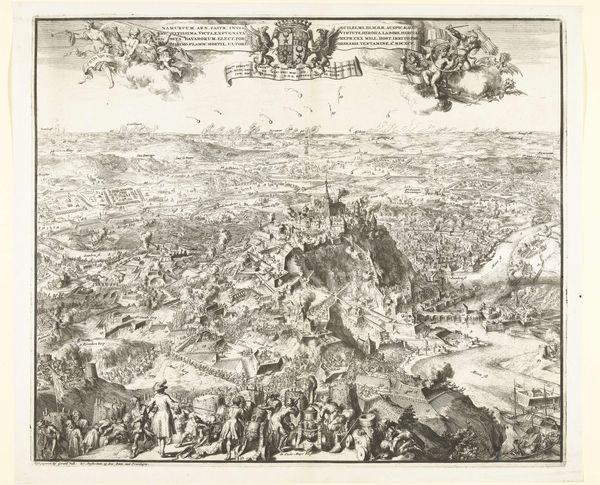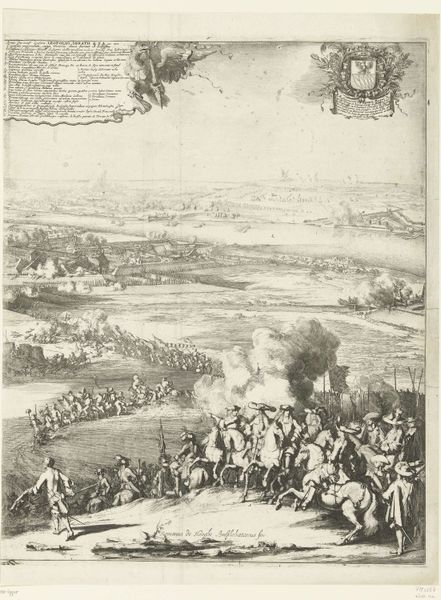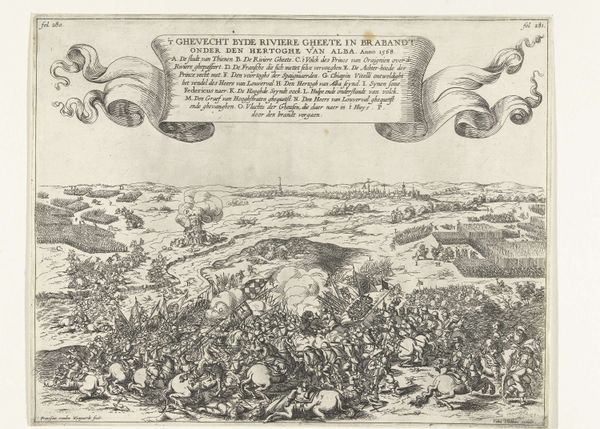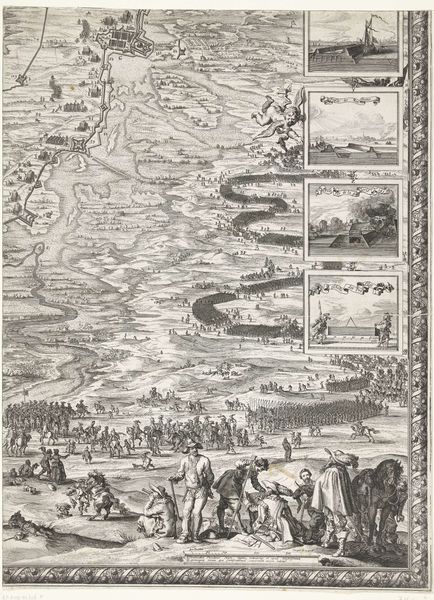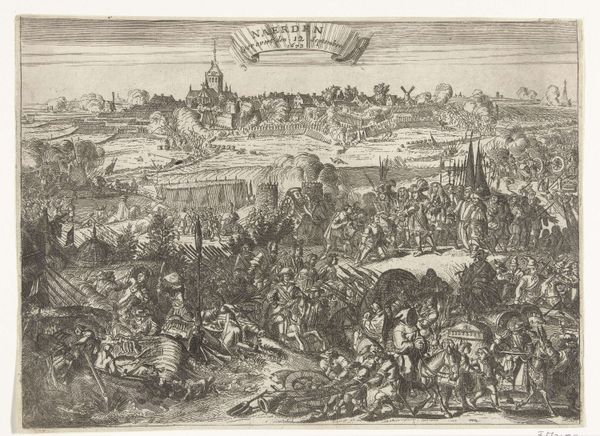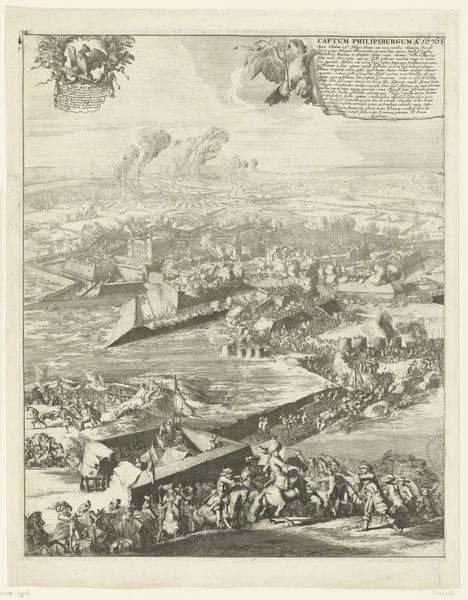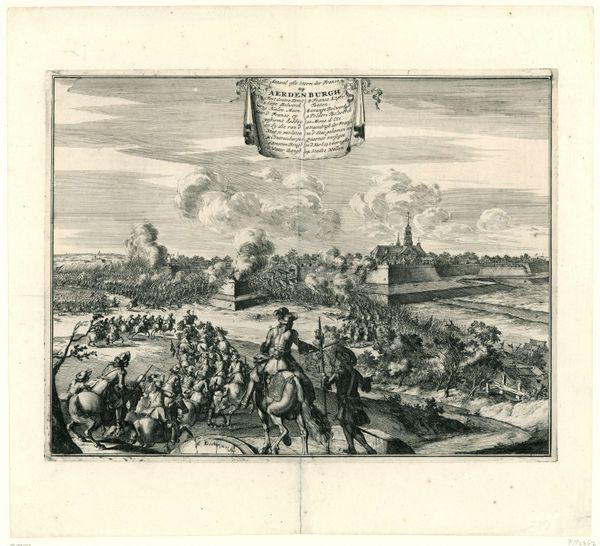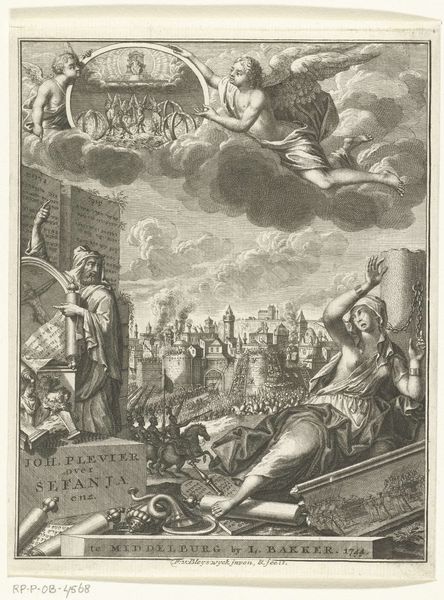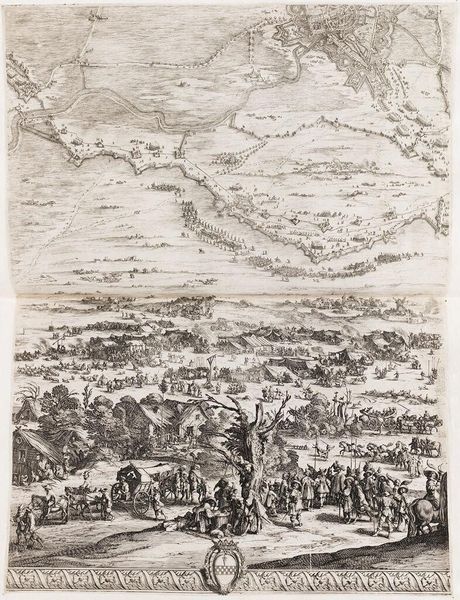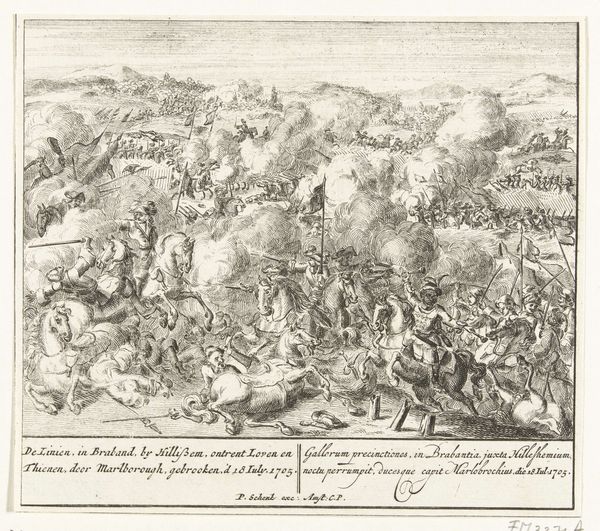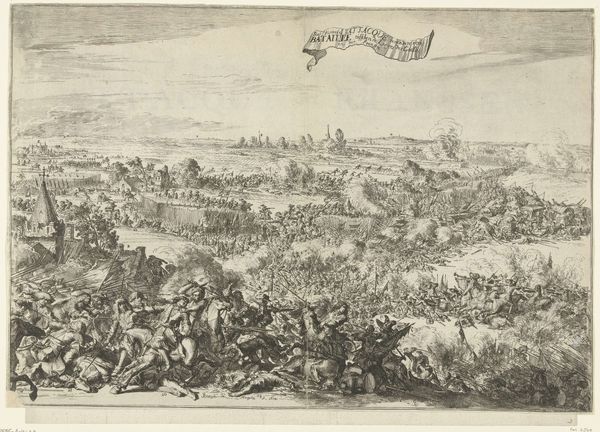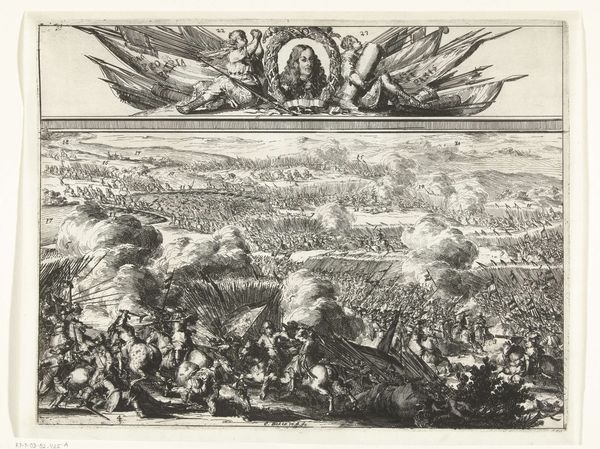
print, engraving
#
baroque
#
pen drawing
# print
#
landscape
#
history-painting
#
engraving
Dimensions: height 553 mm, width 423 mm
Copyright: Rijks Museum: Open Domain
Curator: At first glance, this piece feels overwhelmingly energetic—a whirlwind of conflict etched into paper. It's dense, detailed, and slightly chaotic. What do you see? Editor: Absolutely! We’re looking at “Slag bij St. Denis (rechterhelft),” or “Battle of St. Denis (right half),” a 1678 engraving by Romeyn de Hooghe currently housed at the Rijksmuseum. The overall composition, however, does something interesting, even sublime: there is this layering, a spatial and symbolical hierarchy. We see cherubs at the top of the print surrounding a cartouche filled with text, which serves as the key, with soldiers, officers and battle details at the lower plane. And this creates, paradoxically, some order amid that perceived chaos. Curator: I love that observation of order amidst chaos. I'm intrigued by these cherubs bearing a rather heavy load of text rather than say… flowers. This feels very… calculated. It disrupts what I might normally associate with cherubic figures and creates something unusual, almost… dryly comedic. Editor: Right, the symbolism in the cherubs isn’t so much sentimental, as it is administrative. It reinforces this vision of war as this historical narrative—inscribing the memory. In effect, it monumentalizes every fallen combatant. This visual cue encourages the viewer to see not just individuals dying violently, but how, put together, they formed some higher "historic" meaning. Curator: Absolutely, I hadn't quite framed it that way but, now, I can see how the print creates this double effect of documenting a tragedy with that sort of omniscient air you describe, making it grander, more purposeful perhaps… almost to absolve the horror, one person, one moment, at a time. Editor: Exactly! It’s a record, a political statement, an act of memorialization—all cleverly packaged into an intricate engraving. In sum, it's as if de Hooghe uses baroque visual idioms to depict a turning point in how war came to be remembered. Curator: Well, as a reminder, next time war feels glamorous and sublime to me, perhaps I can sit with this, as both documentation and artwork, so it could offer me an alternate version. Thanks for enlightening me.
Comments
No comments
Be the first to comment and join the conversation on the ultimate creative platform.
